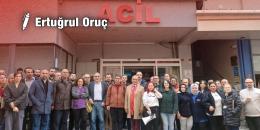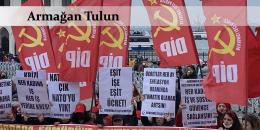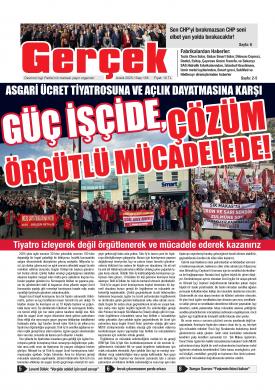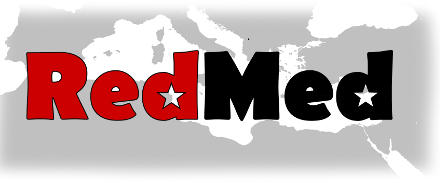West is brown, North is holding on

The 2024 EU Parliament election results are mostly in and there is much to reflect upon. The first and most significant result is the gigantic surge of the far-right, proto-fascist parties. The exact numbers are still subject to change; but the total representation of proto-fascist parties (including European Conservatives and Reformists, Identity and Democracy groups, newly elected and currently unaffiliated far-right parties, and finally AfD that was recently expelled from ECR for giving out the fascist game-plan a bit too early) far exceeds that of the center-left and liberal groups, and it is neck to neck with the largest parliamentary group of the center-right European People’s Party.
This article will focus on the results of the three Nordic countries of the EU: Denmark, Sweden, and Finland. There will be separate articles in RedMed concerning other regions as well as a more general analysis of the results. However, some general thoughts and observations are still needed before diving into the Nordic results for two reasons. The first reason is a general one: the proto-fascist parties exhibit a strong international organizational capacity and the victory in one region will likely echo elsewhere in the EU, and even in the world. The second reason is more specific to this election: many observations from the centers of the EU are not mirrored in the Nordics and sometimes even reversed! This peculiar contrast must be explicitly stated.
The first important observation from EU elections is the results for Italy. There, a proto-fascist party - a direct historical continuation of Mussolini’s fascist party - is already in power and this election posed the first important challenge after its election. And in this case, Giorgia Meloni’s Brothers of Italy (FdI) passed this test and affirmed its grip on power. This is significant, because often in bourgeois democracies a party in power during an economic crisis loses its support. Especially a party that implemented harsh anti-worker policies in spite of massive public struggles. All of these are in clear contrast to the results in Northern Europe, in particular that of Finland and Sweden, which will be explored further later.
The second observation comes mainly from France and to a lesser extent Germany, where proto-fascist parties in opposition, RN (National Rally) and AfD (Alternative for Germany), gained significant ground, groundbreaking in the case of France. So much so that President Macron declared snap legislative elections after dissolving the parliament. This is a more familiar dynamic that has been observed since the Third Great Depression starting in 2008, when far-right parties started moving from the margins to the very center of bourgeois politics. In the case of France, all signs point to a stronger parliamentary representation in the next legislative election, and later even crowning Jordan Bardella with the position of prime minister. What makes it interesting from the perspective of Nordic countries is that this particular dynamic did not seem to repeat itself in the latest EU election, especially in the case of Denmark.
Denmark
When taken at face value, the preliminary Danish election result is a cause for optimism. Unlike the rest of the EU, parties broadly considered under the umbrella of “left” made the most significant gains here. In fact, not only is the leading party a leftist party, the Green-Left Party, but so is the following one, Social Democrats. Even the “radical left” member of the parliament increased its share of votes from 6% to 7%! The divided far-right representatives collectively got 14% of the votes, and while this is not insignificant, it still falls below the top three leading parties.
Denmark is now governed by a coalition led by the Social Democrats since 2019, and before that came the “center-right” government led by Lars Rasmussen. At no point had the far-right Danish People’s Party or any of its descendants made it into the government. How is this miracle to be explained? Is it really the “mixed economy” (!) paradise heralded by the democratic socialist prophets? Reality happens to disagree! A less impressionistic look reveals an alternative explanation: a Denmark of forced separation of immigrant and refugee children from their parents (“to facilitate integration”, except for Ukrainian refugees), a Denmark of harsh gentrification against the urban poor, a Denmark of ethnically and religiously targeted immigration policies, a Denmark of forced expulsion of refugees to active war zones, a Denmark where the support for the militarization of EU is unquestionable and a Denmark that is fully behind the provocations against Russia and China. It is, therefore, not a Denmark that is the bulwark against fascism; but a Denmark where “transitional” fascist demands are so legitimate that they are accepted across the range from the “democratic socialists” to “classical liberals”!
Is it any surprise, then, to learn that Swedish and Finnish fascists use Danish Social Democrats as a role model for immigration? It is true that with the current low unemployment rate and high unionization, the support for proto-fascist parties is not as high as in other Nordic countries. But there is something rotten in the state of Denmark, as the bard once said.
Swedish and Finnish Tragedy
The proto-fascist parties of Swedish Democrats and True Finns are in power and this makes the case of Sweden and Finland different from Denmark, closer to Italy. Another likeness is the insistent, militant pushback from the people, whether it is against the sweeping anti-worker measures or the draconic immigration reforms. The preliminary result indicates, however, that this is where the similarities end; because, unlike in Italy, the far-right members of the governing coalitions actually got fewer votes: compared to the last EU parliament elections SD’s vote share dropped from 15% to 13% and TF dropped from 14% to 6%! It looks like the massive public protests and the long chain of scandals regarding connections to fascist paramilitary organizations, and disclosures of fascist sympathies ended up affecting the level of support, perhaps opening up governability concerns for these parties.
On the other side of the coin, the so-called radical left parties had their vote shares increase dramatically, the Left Party of Sweden had their support increase from 7% to 11% and the Left Alliance of Finland observed a drastic increase to their previous 7% to a whopping 17%! And this all makes sense, considering it is these parties, mostly due to their organizational capacities, that are organizing the largest protests and the biggest demonstrations. This is a wake-up call to all worker’s parties in the region: the people respond to the anti-fascist struggle!
Revolutionary workers parties should take the helm in this struggle as otherwise it is doomed to fail and dissipate. First of all, parties like the Left Party or the Left Alliance are not generating public enthusiasm to fight the rise of fascism but absorbing the dissatisfactions of the public and obfuscating the real nature of what is happening. But their denial of fascism is not the biggest problem. It is their support for EU imperialism, re-militarization and the fascists in Ukraine. It is true that the Left Party of Sweden still has some internal dynamics that might challenge this orientation, but the Left Alliance of Finland is completely devoid of even that. And this is the great tragedy of the Nordic peoples, where their valiant attempt to fight back against the rise of fascism leads to more fertile grounds for fascism, as EU imperialism ramps up its militarisation during the uncertainties of a great depression.













